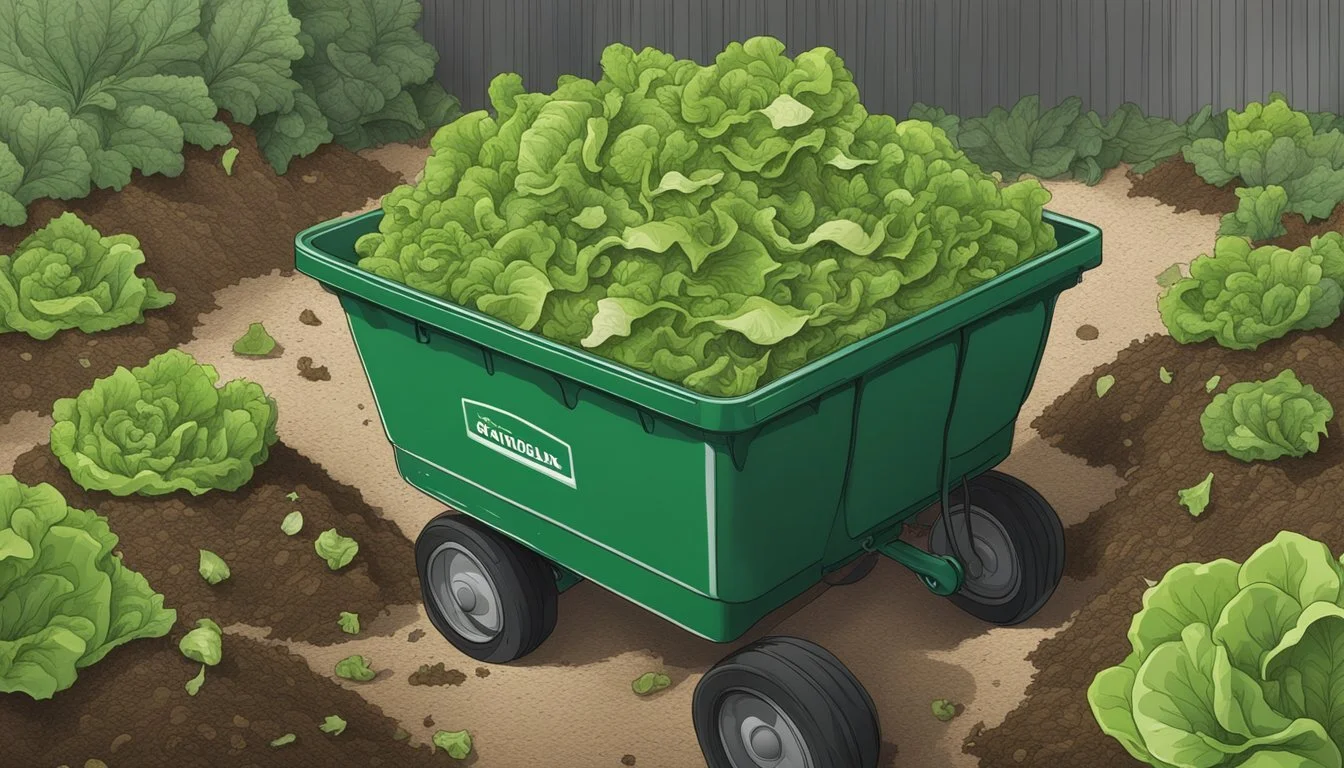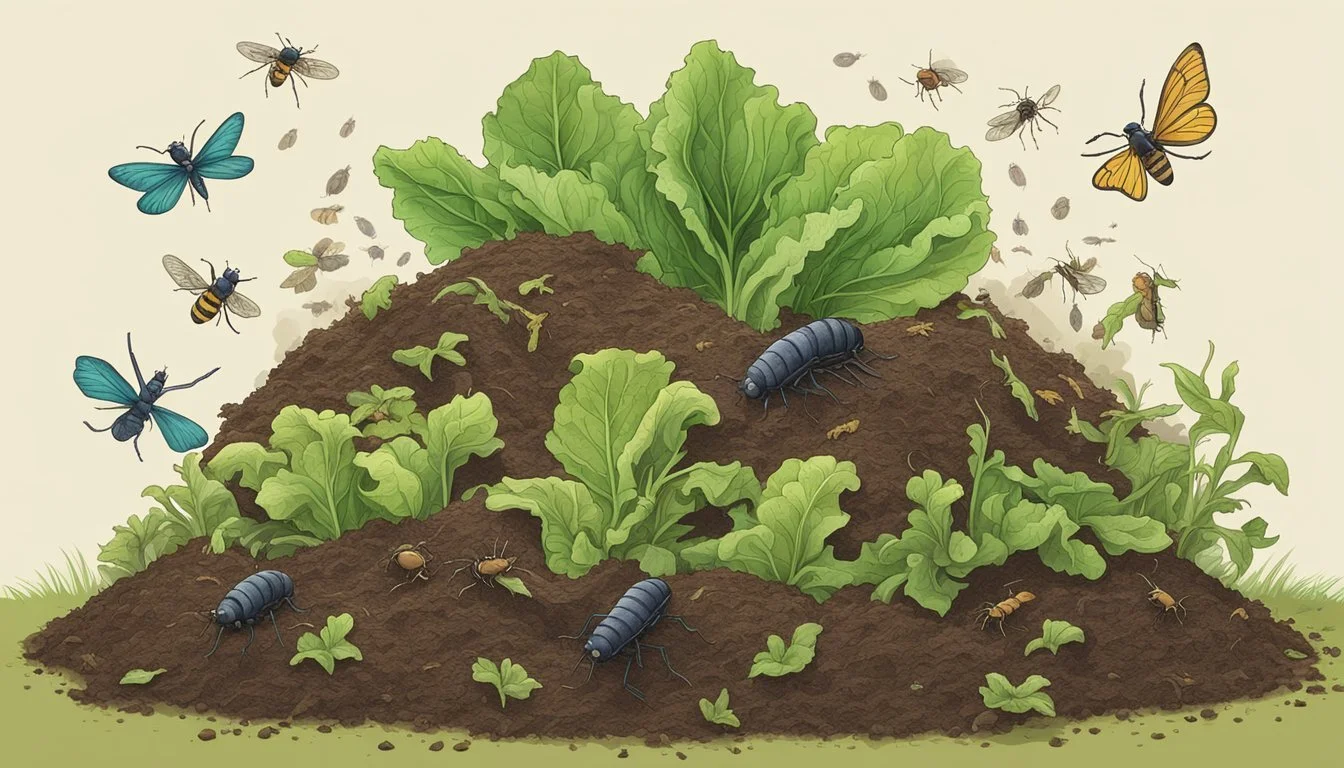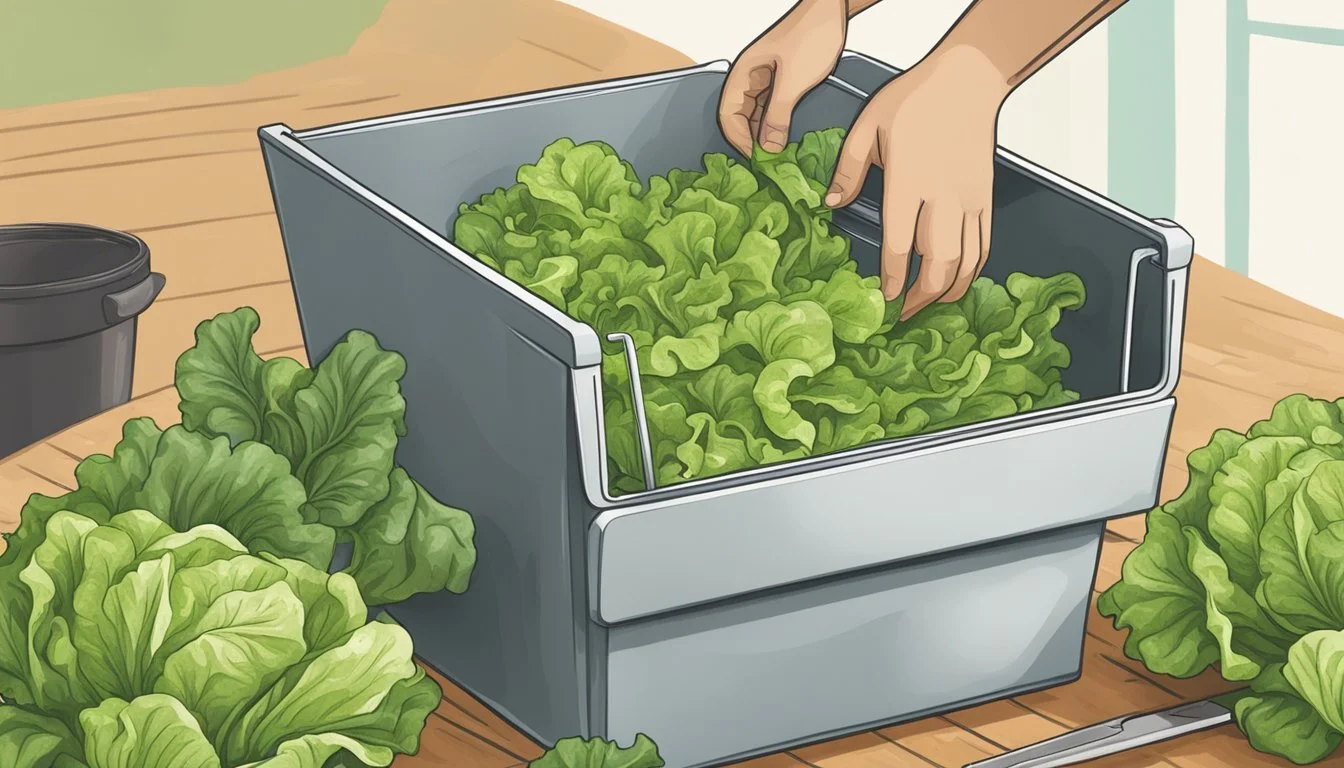Can You Compost Lettuce?
Understanding Greens in Compost Piles
Lettuce and other salad leaves are considered excellent additions to a compost heap. As green materials, they decompose readily and contribute to the nutritious makeup of compost by providing important elements such as nitrogen. This not only promotes a circular food system by cycling valuable nutrients back into the ground but also reduces the environmental impact associated with food waste in landfills.
Composting lettuce is straightforward, and the process benefits the environment by reducing methane emissions from rotting vegetables, which are a potent greenhouse gas. It's advised to balance green materials like lettuce with brown compost materials, such as dried leaves or cardboard, to ensure an optimal mix for successful and efficient composting.
As part of a well-managed compost system, adding lettuce can accelerate the decomposition process thanks to its high moisture and nitrogen content. This ultimately helps to create a rich, organic fertilizer that enriches soil health, supporting plant growth and contributing to a more sustainable gardening practice.
Benefits of Composting Lettuce
Composting lettuce provides numerous benefits for gardeners aiming to enhance soil quality. Lettuce and similar salad leaves are considered green material in the composting process, which are essential in creating a balanced compost pile.
Nutrient-rich soil: When lettuce breaks down, it contributes nitrogen to the compost, which, when mixed with carbon-rich brown material like dried leaves, forms compost that is nutrient-dense. This compost, when added to garden soil, contributes to an increase in the soil's organic content, promoting healthier and more productive plant growth.
Water retention: Compost enriched with decomposed lettuce helps the soil retain water. This improved water retention capability reduces the need for frequent irrigation, making it particularly advantageous for areas with limited water resources.
Sustainability: Incorporating lettuce into compost is an environmentally friendly way to recycle kitchen waste. It prevents this organic matter from ending up in landfills where it would decompose anaerobically and produce methane, a potent greenhouse gas.
Lastly, while the benefits of composting lettuce are clear, gardeners should properly balance their compost piles by adding both greens and browns and maintain a good level of moisture to avoid issues like odors or pests. Regularly turning the compost pile ensures an efficient breakdown of materials, resulting in high-quality compost for gardening use.
Preparing Lettuce for Composting
When adding lettuce to a compost pile, proper preparation is essential to accelerate the decomposition process and avoid attracting pests or promoting disease. These steps ensure that lettuce contributes effectively to the compost's nitrogen content without compromising its quality.
Removing Contaminants
Before including lettuce in compost, one must ensure it's free of pollutants. Any remnants of dressing, oils, or non-organic materials need to be removed, as they can hinder bacteria and negatively impact the compost quality. Oils are particularly problematic because they can create a barrier that prevents water and air from reaching the bacteria that break down the organic matter.
Optimal Size for Decomposition
Chopping lettuce into smaller pieces increases the surface area available for bacteria. As a rule of thumb, the ideal size for rapid decomposition is roughly 1-2 inches. Small pieces of lettuce integrate seamlessly into the compost, breakdown more quickly, and help maintain an even temperature within the pile.
Managing Seeds in Lettuce Waste
Lettuce seeds in the waste can sprout and grow in the compost pile. If lettuce has gone to seed, it's best to remove the flowering parts to prevent accidental cultivation within the compost. The rest of the lettuce remains a beneficial addition, providing nitrogen and moisture to the composting mix.
Avoiding Composting Diseased Plants
Lettuce affected by pests or disease should not be composted as it can introduce pathogens to the compost pile. Diseased plants can contaminate the compost and might survive even in high temperatures, posing a risk to future plants that will use the compost. If the lettuce shows signs of disease, it's safer to discard it separately.
Composting Basics
In composting, the objective is to create an environment where organic material efficiently decomposes into compost. Three essential factors influence this process: the balance of carbon and nitrogen, appropriate moisture levels, and sufficient oxygenation.
The Carbon-to-Nitrogen Ratio
Carbon-rich materials, often referred to as "browns," are foundational for composting. These include leaves, branches, and paper. Green materials supply nitrogen and include fruit scraps, vegetable peels like lettuce, and coffee grounds. A proper carbon-to-nitrogen ratio (C ratio) is crucial for effective decomposition. Ideally, a compost pile should maintain a C ratio of roughly 30:1, which optimizes microbial activity and speeds up decomposition.
Carbon Sources (Browns): Sawdust, cardboard, dry leaves
Nitrogen Sources (Greens): Kitchen scraps, grass clippings, manure
Maintaining Proper Moisture Levels
Water is a key ingredient in composting, as moisture supports the microbial processes that break down organic material. The compost pile should be moist, like a wrung-out sponge, but not soaked. Excess water can lead to anaerobic conditions, which slow down the decomposition and may produce unpleasant odors.
Ideal Moisture Content: 40-60% by volume
Aeration and Oxygenation Techniques
Air circulation is vital to provide oxygen to the microorganisms responsible for decomposing organic material. Oxygen can be introduced through turning the compost pile periodically, which also helps distribute moisture and green material evenly. Techniques such as manually turning the heap with a shovel or using a compost aerator tool ensure that air reaches all parts of the compost pile.
Common Composting Mistakes to Avoid
Composting lettuce and other organic materials can be a simple and environmentally beneficial process when done correctly. To ensure a healthy and productive compost pile, they must avoid certain materials and manage decomposing matter properly.
Excluding Non-Compostable Materials
When composting lettuce or any other organic waste, it is critical to exclude non-compostable materials which can introduce toxins or fail to break down:
Meats and dairy: They can attract pests and cause odor issues.
Fats and oils: They can create a dense, oxygen-poor environment that slows down decomposition.
Treated wood: May contain harmful chemicals that could leach into the environment.
Plastic: Does not break down and contaminates the compost with microplastics.
A compost pile is a living system. Introducing these materials can disrupt the balance required for efficient composting, potentially leading to rot and disease.
Managing Odors and Pests
Maintaining a compost pile that does not offend the neighbors or attract unwanted pests requires vigilant management:
To prevent odors: Ensure the compost pile is well-aerated to avoid anaerobic conditions, which cause foul smells. Turn the pile regularly to introduce oxygen.
For pest management: Maintain a balance between green and brown materials. Covering fresh kitchen scraps with a layer of browns such as dry leaves or straw can deter flies and rodents.
To avoid disease: Avoid adding diseased plants or weeds with seeds, which might not be killed and could spread throughout your garden.
By focusing on what is and is not included in a compost pile and understanding the conditions that cause odors and attract pests, one can create a more successful and environmentally friendly composting operation.
Using Composted Lettuce
Using lettuce that has been composted benefits garden health by providing an organic means to enrich soil and protect plants. This section will detail how to utilize composted lettuce effectively.
As a Garden Mulch
Composted lettuce can serve as an excellent mulch for gardens. Mulch helps retain soil moisture, suppresses weeds, and can gradually improve soil quality as it breaks down. Gardeners often spread a layer of composted lettuce around plants, ensuring that it does not touch the stems to prevent rot.
Benefits: Retains moisture, suppresses weed growth
Application: Spread evenly, avoid plant stems
As a Soil Amendment
Composted lettuce acts as a natural soil amendment, enhancing soil structure and fertility. Integrating compost into garden beds fertilizes the soil, providing a slow release of nutrients that promotes plant growth. This is particularly advantageous for environments aiming for sustainable practices.
Benefits: Improves soil structure, adds nutrients
Application: Mix into the top layer of soil





